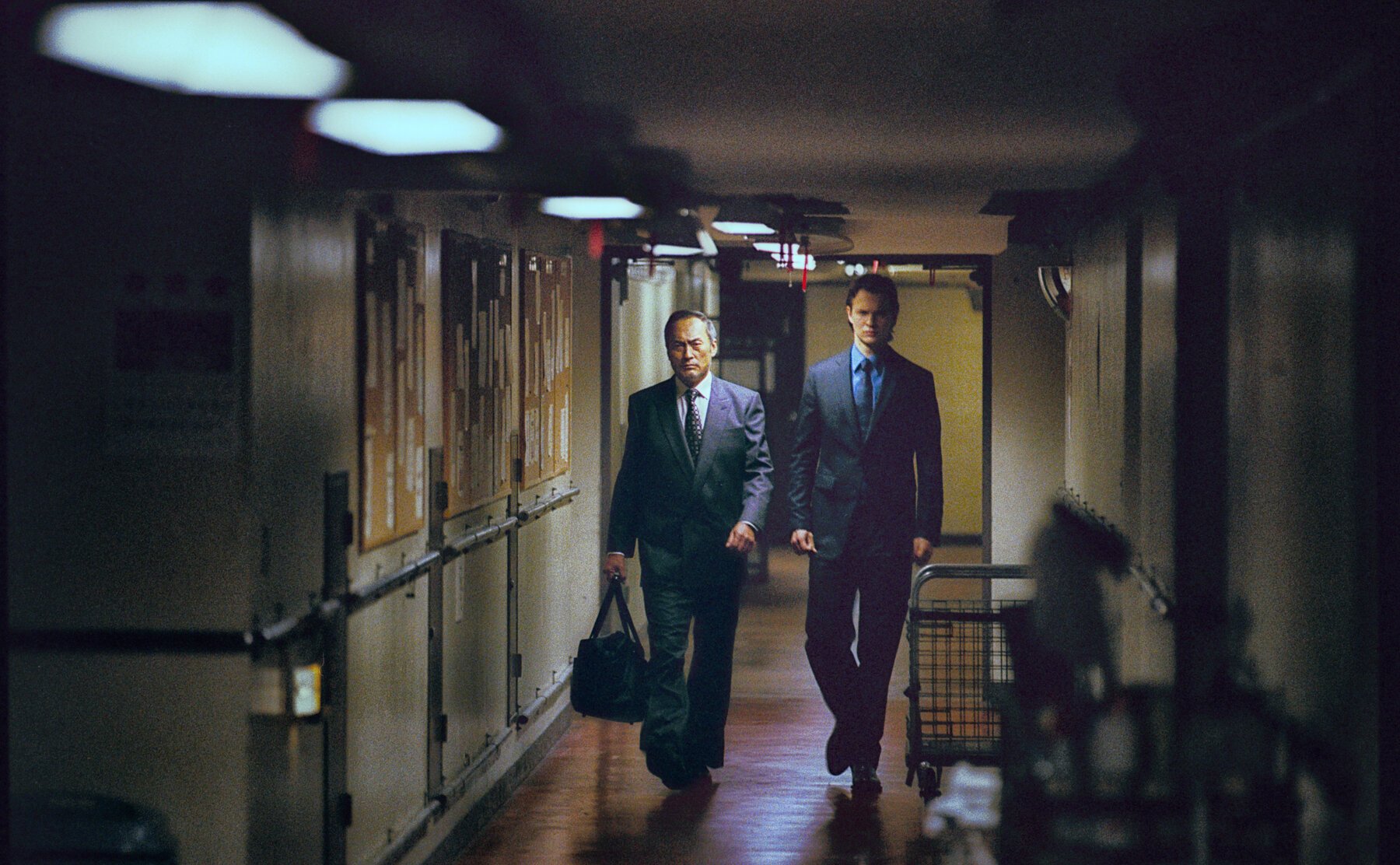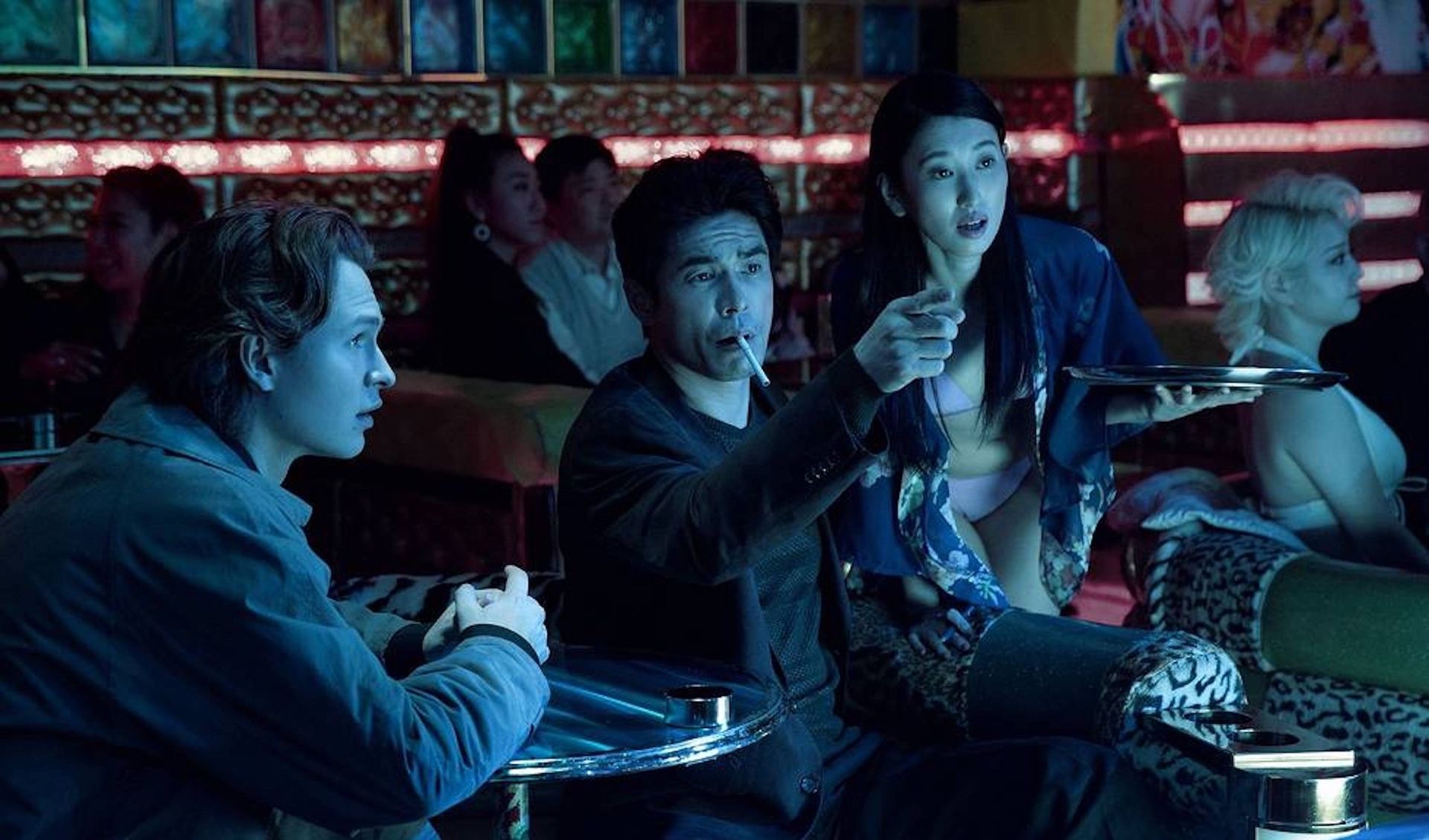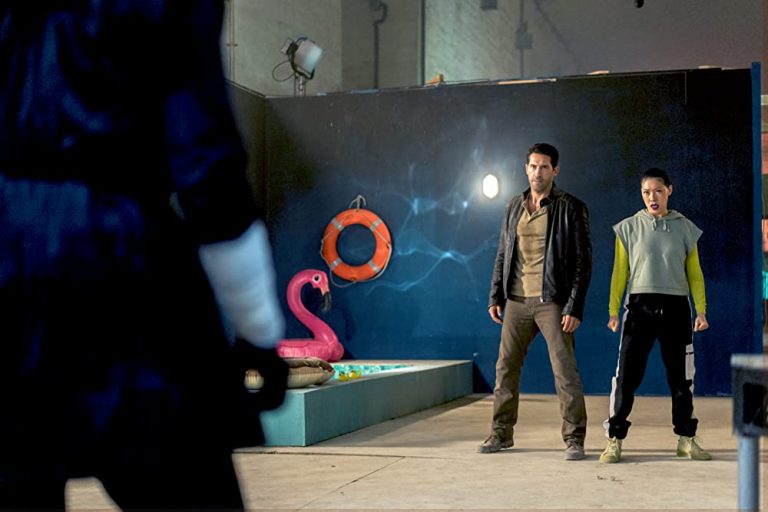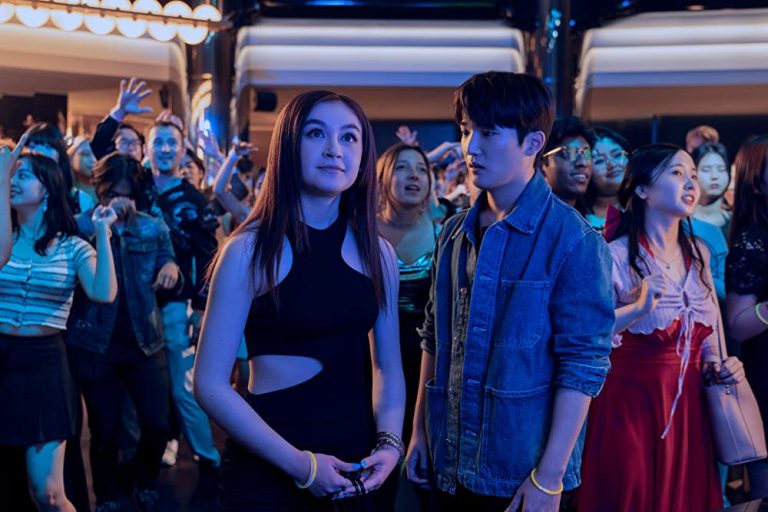Tokyo Vice Episodes 1,2 & 3 Recap & Ending Explained – Tokyo Vice, the adaptation of the 2009 memoir by Jake Adelstein, was initially set to be developed as a movie in 2013, starring Daniel Radcliffe as Adelstein and Anthony Mandler set to direct. The deal had advanced enough that a production timeline of mid-2014 was set before it finally fell through. In mid-2019, the film treatment was refitted as a 10 episode television series, given a straight-to-series order by Warner Media for their HBO Max platform. JT Rogers was set to create and write with Daniel Destin Cretton (Shang-Chi) directing the series. Michael Mann was hired to direct the pilot episode and also serve as executive producer of the series, which does give the show an added boost. Mann’s kinetic direction and his use of handheld cameras give Tokyo Vice an added sense of dynamics and raw energy. But considering that he is only directing the pilot, it is a question of whether the series can follow through with that same energy. Read on and full spoilers.
Tokyo Vice Episodes 1, 2 & 3 RECAP:
How it begins:
Thirty seconds in, Jake Adelstein (Ansel Elgort), and Hiroto Katagiri (Ken Watanabe) are seen walking down darkened hallways, strapping in bulletproof vests, with Jake calmly asking Katagiri whether this will stop a bullet. Katagiri with an experienced calm counters with “They will not shoot you in a public place….these are for knives”. The noir-infused, very much 2006 Miami Vice hearkening landscape is both a throwback as well as a fresh air brought back to our TV screens, as the material being given here is right up Mann’s alley.
Opening in Medias Res, Mann throws us right into crosses, double-crosses, and the volatile world of the Tokyo underworld. Adelstein and Katagiri are planning to get to dinner early and prepare themselves so that they have the home-field advantage, but upon reaching the hotel they are informed that their meeting has been moved and is now being held in the private lounge of the “number two yakuza” they are supposed to meet. Having lost the advantage and being sucked deeper into uncharted waters, Adelstein and Hakagiri find themselves across from one of the several chiseled faces with smoldering eyes hiding behind an equally smoldering cigarette; with threats coming liberally – “We know what you’re investigating. Walk away, it will be like it never happened. Publish it? There’s nowhere you can hide.”
The Origin Story and the World of Tokyo:
This cold open gives Tokyo Vice the distinct juice ubiquitous only to Michael Mann and propels the narrative forward with a closed cut and manic energy. The story cuts to two years earlier and it’s 1999. Jake is studying for the entrance exam of the Tokyo Meicho, Tokyo’s biggest and most-read newspaper, and he would be the first foreign reporter to work there. The montage shows Adelstein studying, teaching an English class, eating quick meals at sushi bars all the while studying, blowing off steam at the club, his tiny apartment in Tokyo arranged in a distinctive square pattern, with books and clipping about the yakuza covering his walls, leading his life up to that point, with a healthy dose of origin story supplied at key moments, is slick, methodical and makes the mundane seem exciting. All these events are framed with a distinctive yellow or washed-out palette, nighttime Tokyo lurking as a neon-infused umbrella over Jake’s head as the noir-drenched tone engulfs the narrative.
Jake’s witty sparring with the interviewers, while speaking in fluent Japanese as he answers the normal question of why he wants to work here, with the revelation that he has been fascinated with the methodology of crime and murder ever since he had first experienced it beside his father, who used to be a coroner, makes him relatable to both the interviewers as well as the audience. Even though he missed the last page of his exam sheet, he scored high enough marks that he is selected, with his written Japanese singled out as high praise. However when asked his opinions about Jews running the world economy, considering that Adelstein is Jewish, Jake answers that he wouldn’t have accepted this job of such a meager salary if he believed in that opinion. This establishes Adelstein with the typical features of a Mann protagonist – a tall, handsome outsider driven by the great American impulse to excel at the field he has chosen, however out of bounds or completely out of his wits he might find himself.
His first day at Tokyo Meicho is very much a stark reminder of how much of a fish out of water Adelstein is in. His direct superior, editor Mimi Maruyama (Rinku Kikuchi) is a stickler for rules and formatting, and not hesitating to point out the “why” of each incident reported is the least important probably because they won’t have the time. She is also not reticent in publicly reprimanding Adelstein when he had responded to her by her first name. The lead editor of the police beat (Kosuke Toyohara), is instinctively rude to the “gaijin” (foreigner), singling him out as a tourist, and later that night while chatting with his fellow reporters over drinks, he is given a rude awakening that “everyone thinks you are a spy”. His fellow friends even call him “Mossad”, a clever bastardization of his hometown name “Missouri”. Tokyo Vice very much is a show about outsiders looking through their lens into a multicultural world seeped deep within subcultures ingrained with pre-determined thoughts and opinions about the outside world, and as the show progresses, more methodical workings of the organizational structure are hoped to be explored.
A line shot of a Tokyo metro pulls back revealing a face of a man slumped out on the street. Pulled back further and we see the body rife with multiple stab wounds, the knives sticking out of two of them. Detective Katagiri (Ken Watanabe), the smoldering intense detective with the philosophy of a zen master, is introduced here. This incident is also JAke’s first stint at the paper, and his energetic disposition in covering this scene is soon squashed because he mentioned “murdered” in his first draft. As it is revealed subsequently, and perhaps not something new in hindsight, there is no murder in Tokyo. The most a crime can hope to be recorded is manslaughter, while the tendrils of the yakuza seeped so deep into the politics and lives of Tokyo, that keeping the peace is a far safer option than revealing everything.
All of this information is revealed to Jake by the corrupt, suave, and badass cop Miyamoto (Hideaki Ito) when he accompanies Miyamoto on a night out. At the Onyx club in Kabukicho (Red Light District), while Miyamoto is shaking down the club owners, Jake meets fellow ex-pat Samantha (Rachel Keller), an American hostess with her ambitions; they bond as kindred spirits which later evolves more as the story progresses. Jake’s hard-nosed determination to be a reporter and simply report on what happens objectively, clashes with the “mentally tyrannical” system, which he apparently “did not expect from a newspaper”, a revealing look at Jake’s naivete about the world and the inherent blindsided-ness he is facing at every turn. It is further exacerbated when Jake watches an old man light himself on fire. The disturbing image haunts JAke as he is determined to find out why. As he lingers on the scene, he finds a matchbook emblazoned with the same logo of a mysterious loan company to which the stabbing victim was indebted, a story that JAke is convinced is far more important than looks the eye.
Jake and Hakagiri finally meet:
The solipsism of the pilot loosens, as Mann walks out of the director’s chair and in steps Josef Kubota Wladyka for the remaining two episodes, and JAke’s perspective becomes part of an ensemble of perspectives as the world of Tokyo opens up. We see the characters we reasonably believe we will be following the rest of the coming weeks – Jake, Samantha, Katagiri, Eimi, and Sato (Sho Kasamatsu), a young Yakuza captain with ambitions to rise to the ranks of the Yakuza organization.
We see Katagiri at the beginning suffering through an investigative dilemma. As the clearance rate in Tokyo is the primary focus instead of actively investigating the case, Katagiri is unsatisfied with the resolution of the stabbing case, which involved a low-level yakuza turning himself in, his prints all over the murder weapon. Katagiri, under the pretense of formalities, visits the victim’s widow, to surreptitiously investigate on the down-low. Katagiri’s investigation reveals that the woman and her husband were collecting information for a lawyer so that they can sue their yakuza predators. As Katagiri peruses the evidence, kismet forces Jake to appear at the same location, asking the widow about information.
He is turned away, but we get the deeply focused shot of Katagiri taking in Jake’s presence as he walks away from the house. They will meet at the final moment of the episode when Jake follows a hot police tip and shows up at a yakuza turf war, or what could have been a turf war before Hakagiri shows up at the scene and defuses the situation with practiced ease. Jake is discovered by Hakagiri while trying to take pictures of the scene, and Hakagiri lets Jake go, with the customary warning – “don’t write about this”.
Later in the third episode, Katagiri and Jake establish a burgeoning friendship, and Katagiri explains the tightrope the police have to walk in maintaining the peace and deescalating the situation between the different yakuza organizations throughout Tokyo. And because Jake follows Hakagiri’s advice and did not write about the incident, the Yakuza pretended the incident did not happen, and the peace was upheld. As a notion of thanks, Katagiri takes Jake on his first raid and gives him exclusive coverage of the arrests. It both gives JAke a first-hand experience of what to write and what to withhold about the volatile powder-keg that is the Tokyo underworld, and it also gives him a reluctant ally in the world-weary cop Katagiri.
Also, Read – All The Old Knives Movie Explained: Ending & Themes Analyzed
Sato and Samantha:
The final interesting character we would be following is Sato, a low-level yakuza officer with burning ambitions of being a big shot. He is the audience surrogate and our way into the yakuza politics, struggling to hold his temper and fists as his organization, the Oyabun, holds back from retaliating against the Tozawa clan, the same clan whose turf war Katagiri defused the episode prior. In a way he is an inverse and yet the kindred spirit of Jake, a Mann protagonist like Mike from Heat, chasing after a high. Like Jake, he is also an outsider, unable to completely affect things on the inside, unable to accept he is from the outside looking in, and dreaming of being in the inner circle. The more interesting wrinkle is the friendship between Sato and JAke, a bond created from their love of American fashion, which could easily break due to their shared attraction for Samantha. When a fellow yakuza insults him in front of their whole gang, Sato punches the guy to a bloody pulp instead of “reading the air”. When Oyabun reprimands him for hurting his “brother”, you are terrified and feel sorry for Sato.
Samantha (played by Rachel Keller), is the standout character of the show. An American ex-pat hostess with big dreams of opening her club, she can glide through the darkened corridors of the nightclubs and the Tokyo underworld with experience and sultry confidence. Her interests are the subculture of Tokyo itself, her love for the city and the subculture is palpable. But beneath the bright and seductive exterior, there lies a woman with a mysterious past, content on revealing backstories out of pulpy novels than revealing herself. The only “real thing” she tells Jake is she hasn’t spoken with her family in 4 years, a far cry from Jake’s own who we see has a somewhat strained relationship with his family but is very close with his sister, content on listening to tapes of her recordings sent to him. She is the quintessential noir heroine, and that is an exciting wrinkle to watch.
Tokyo Vice Episode 3 Ending Explained:
As Sato recognized Adelstein from the news coverage of the arrests led by Hakagiri, he reveals it to the head of Oyabun, Ishida about Adelstein. Sato probably believes the Tozawa clan could be brought down by Adelstein without resorting to full-scale war. The final moments of Episode 3 see Jake out on a night with the fellas, getting ribbed at his inability to swing a baseball bat despite being an American, but finally picked up by the Yakuza in an anonymous armored black car. The final shot is of him framed behind a car window, as the neon of nighttime Tokyo streaks in through the windowpane. He is resigned to unwittingly being part of the next big scoop and finally getting revealed about the heart of the inner workings of Tokyo, just out of his control at the moment.
Final Thoughts:
I would have preferred more if Mann was the director throughout this 10 episode miniseries. The director of the pilot is very much responsible for setting the tone and visual aesthetic of the show, and while Mann gives it a very powerful lift-off, his style is so distinctive and so dynamic that it is hard to replicate in subsequent episodes. However, the material and the characters are interesting enough that Tokyo Vice has me hooked. This is a different type of noir, but in the end, it is also neo-noir at its most basic and most potent, with Elgort’s height and good looks accentuating the protagonist’s outsider nature far better than Radcliffe could have ever been. And like any prestige television series, the supporting cast is far too strong and charismatic to be dismissive of the show entirely. This is a show which is prime for weekly follow-ups and very much binge-worthy material to consume.












